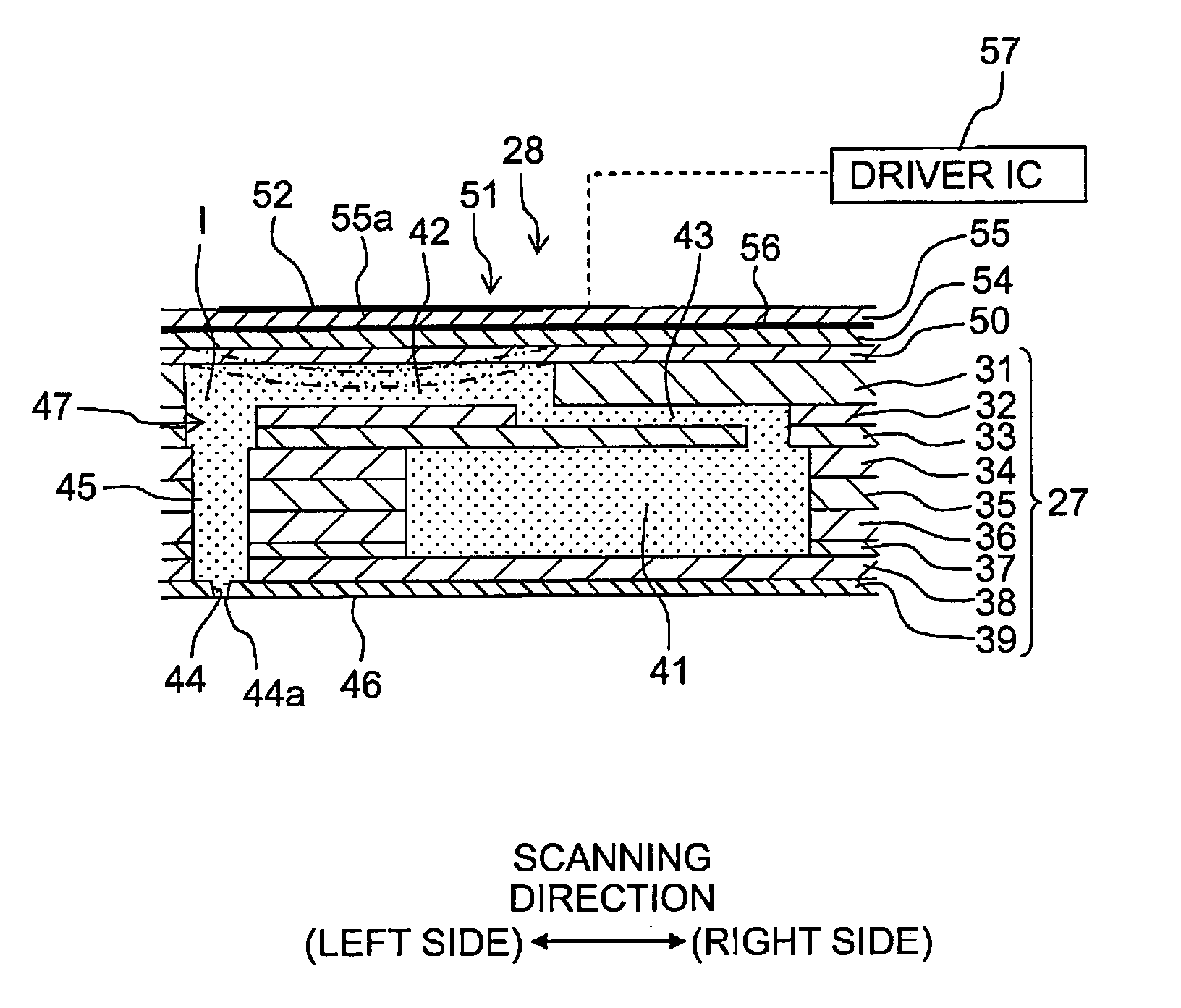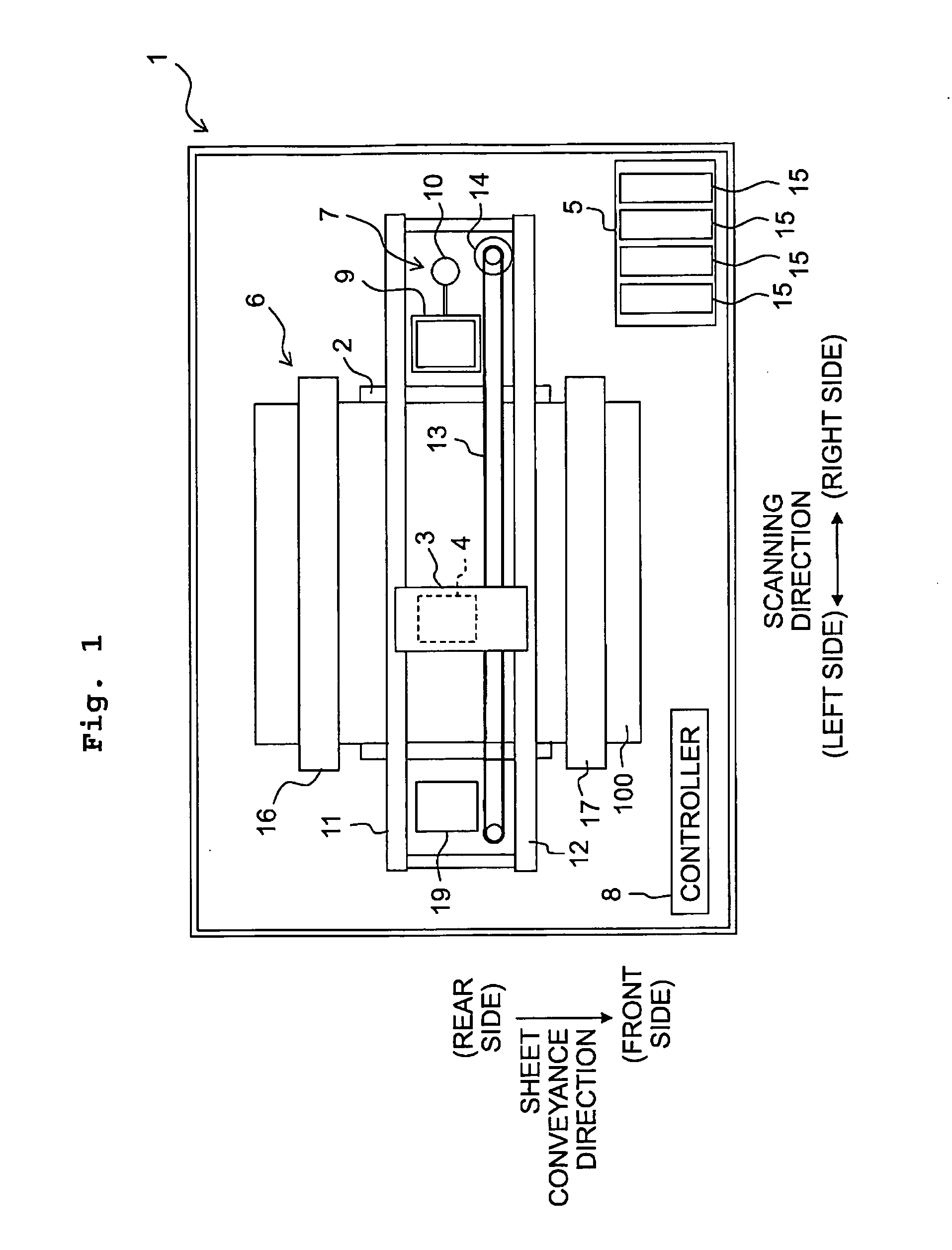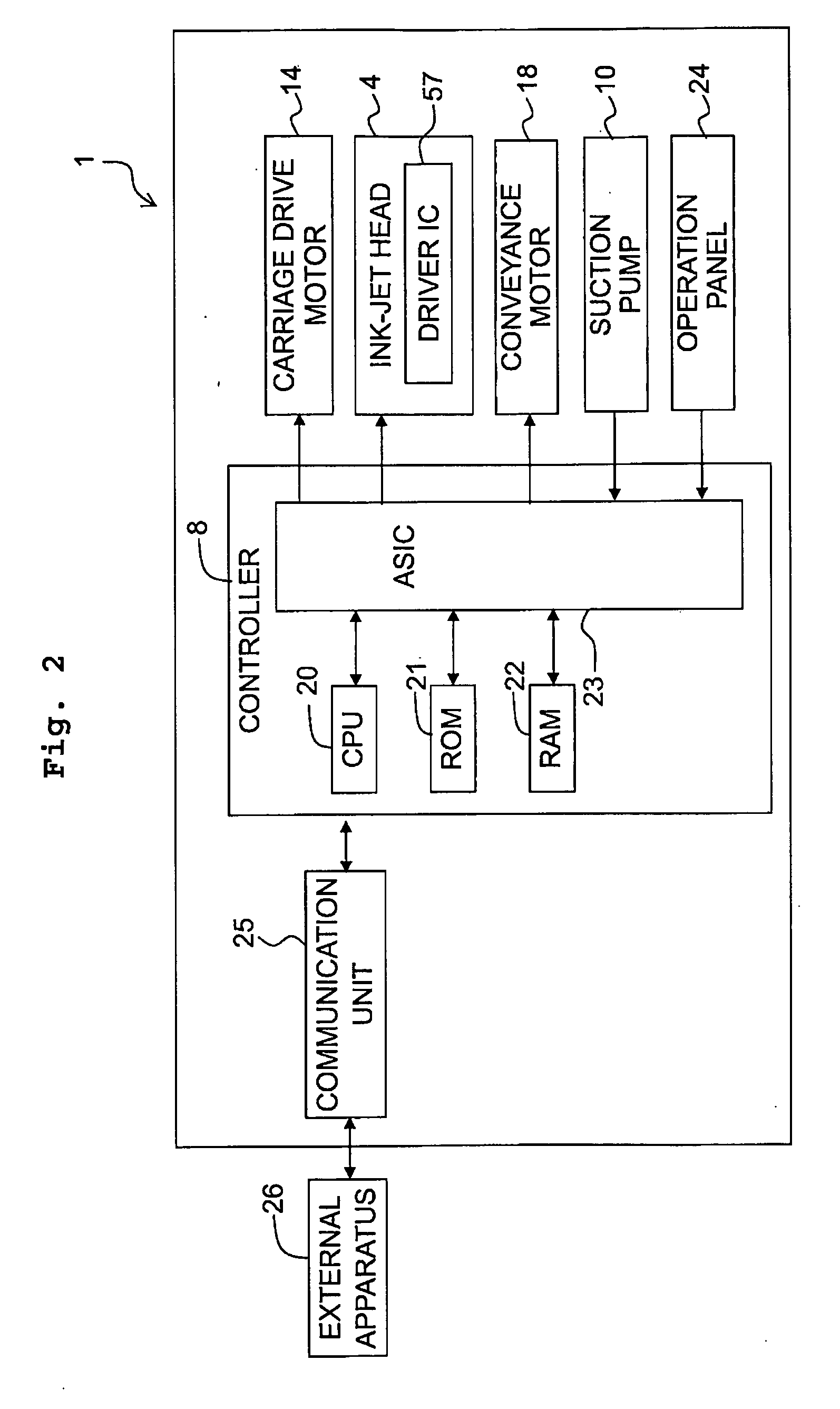Liquid discharge apparatus
a liquid discharge apparatus and liquid discharge technology, which is applied in the direction of printing, other printing apparatus, etc., can solve the problems of liquid not being normally liquid being discharged from the nozzle in some cases, and viscosity of liquid being affected,
- Summary
- Abstract
- Description
- Claims
- Application Information
AI Technical Summary
Benefits of technology
Problems solved by technology
Method used
Image
Examples
Embodiment Construction
[0042]Subsequently, an explanation will be made about an embodiment of the present teaching. A scanning direction indicated in FIG. 1 is defined as a left-right direction of a printer 1. The upstream side in a sheet conveyance direction in FIG. 1 is defined as the rear side of the printer 1 and the downstream side in the sheet conveyance direction is defined as the front side of the printer 1. A direction perpendicular to the scanning direction and the sheet conveyance direction (direction perpendicular to the paper surface of FIG. 1) is defined as an up-down direction of the printer 1. Noted that the upper paper surface of FIG. 1 (the surface on which FIG. 1 is depicted) is defined as the upper side of the printer 1 and the back surface of FIG. 1 is defined as the lower side of the printer 1.
[0043]
[0044]As depicted in FIGS. 1 and 2, the ink jet printer 1 includes a platen 2, a carriage 3, an ink jet head 4, a cartridge holder 5, a conveyance mechanism 6, a maintenance unit 7, a con...
PUM
 Login to View More
Login to View More Abstract
Description
Claims
Application Information
 Login to View More
Login to View More - R&D
- Intellectual Property
- Life Sciences
- Materials
- Tech Scout
- Unparalleled Data Quality
- Higher Quality Content
- 60% Fewer Hallucinations
Browse by: Latest US Patents, China's latest patents, Technical Efficacy Thesaurus, Application Domain, Technology Topic, Popular Technical Reports.
© 2025 PatSnap. All rights reserved.Legal|Privacy policy|Modern Slavery Act Transparency Statement|Sitemap|About US| Contact US: help@patsnap.com



